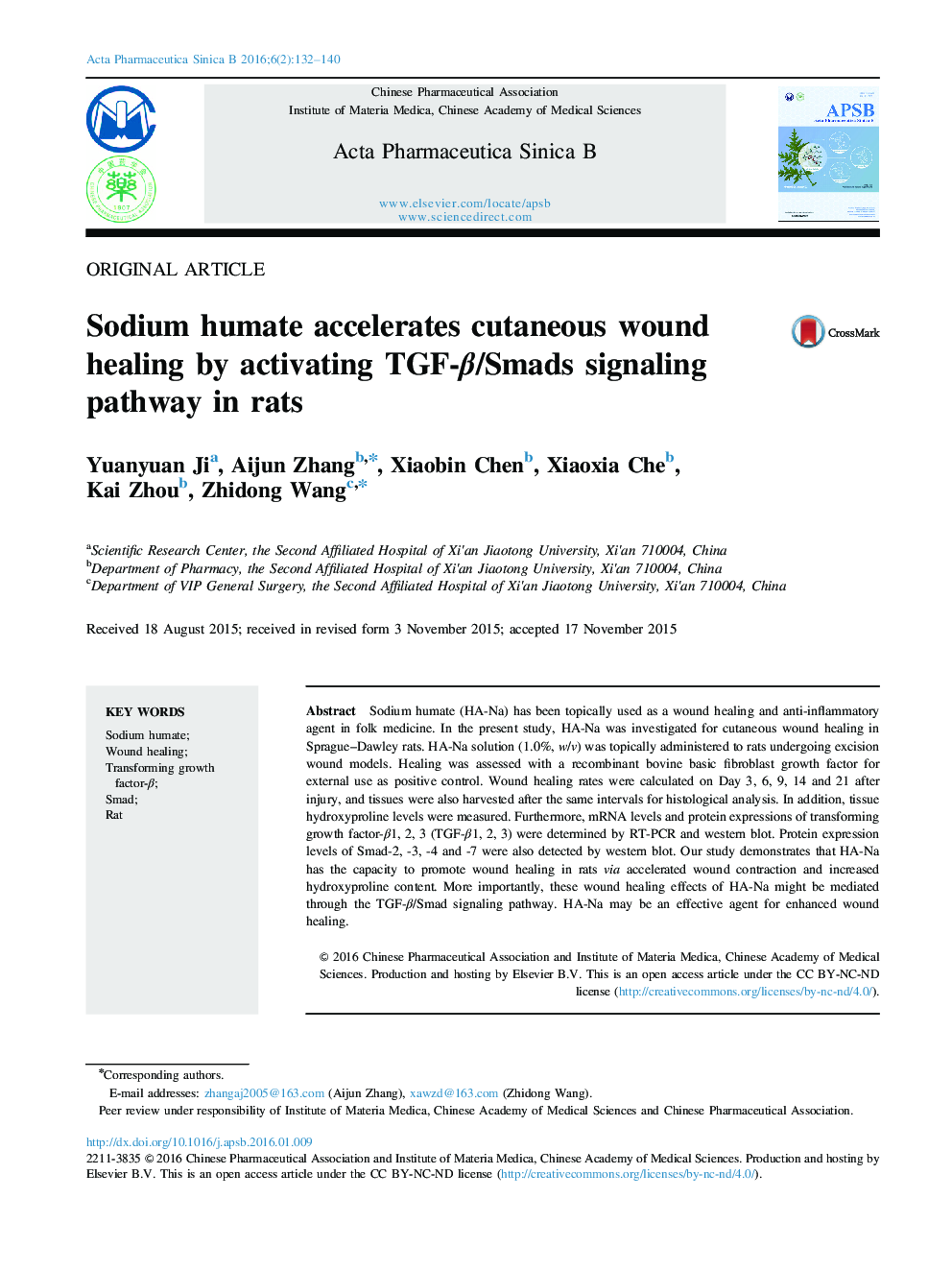| Article ID | Journal | Published Year | Pages | File Type |
|---|---|---|---|---|
| 2474457 | Acta Pharmaceutica Sinica B | 2016 | 9 Pages |
Sodium humate (HA-Na) has been topically used as a wound healing and anti-inflammatory agent in folk medicine. In the present study, HA-Na was investigated for cutaneous wound healing in Sprague–Dawley rats. HA-Na solution (1.0%, w/v) was topically administered to rats undergoing excision wound models. Healing was assessed with a recombinant bovine basic fibroblast growth factor for external use as positive control. Wound healing rates were calculated on Day 3, 6, 9, 14 and 21 after injury, and tissues were also harvested after the same intervals for histological analysis. In addition, tissue hydroxyproline levels were measured. Furthermore, mRNA levels and protein expressions of transforming growth factor-β1, 2, 3 (TGF-β1, 2, 3) were determined by RT-PCR and western blot. Protein expression levels of Smad-2, -3, -4 and -7 were also detected by western blot. Our study demonstrates that HA-Na has the capacity to promote wound healing in rats via accelerated wound contraction and increased hydroxyproline content. More importantly, these wound healing effects of HA-Na might be mediated through the TGF-β/Smad signaling pathway. HA-Na may be an effective agent for enhanced wound healing.
Graphical abstractSodium humate (HA-Na) has the capacity to promote wound healing in rat model via accelerating wound contraction, increasing hydroxyproline content and improving the level of tissue healing. This wound healing effect of HA-Na might be mediated through TGF-β/Smad signaling pathway.Figure optionsDownload full-size imageDownload as PowerPoint slide
